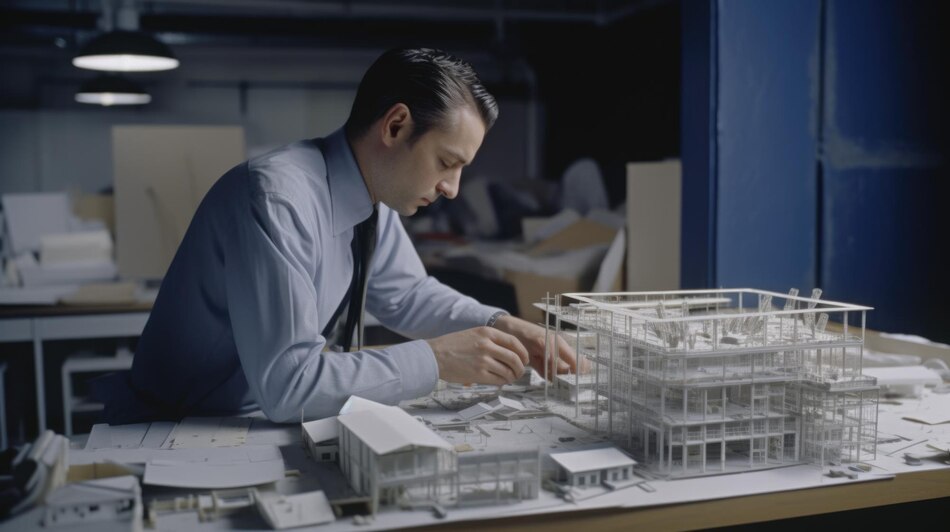Introduction:
In the fast-paced world of architecture, engineering, and construction (AEC), technology continues to revolutionize the way projects are designed, constructed, and managed. One such technological advancement that has reshaped the industry is Building Information Modeling (BIM). In this blog, we embark on a journey to demystify BIM, exploring its definition, evolution, key components, benefits, and applications in the AEC sector.
1. Defining what is BIM:

a. Understanding the Concept:
- Building Information Modeling (BIM) is a digital representation of the physical and functional characteristics of a building or infrastructure. It encompasses the creation and management of intelligent 3D models that serve as a shared knowledge resource for stakeholders throughout the project lifecycle.
b. Core Principles of BIM:
- BIM is founded on principles of collaboration, integration, and information management. It enables stakeholders to work together seamlessly, share data effectively, and make informed decisions based on accurate and up-to-date information.
2. Evolution of BIM:

a. Historical Context:
- The roots of BIM can be traced back to the 1970s, with the emergence of early computer-aided design (CAD) systems. However, it wasn’t until the late 20th century that BIM began to take shape as a comprehensive methodology for building design and management.
b. Technological Advancements:
- Advances in computing power, software development, and interoperability standards have fueled the evolution of BIM. Today, BIM encompasses a wide range of tools and technologies, from 3D modeling software to cloud-based collaboration platforms.
3. Key Components of BIM:
a. 3D Modeling:
- At the heart of BIM is 3D modeling, which allows stakeholders to create digital representations of buildings and infrastructure. These models contain detailed information about the physical components of a project, such as walls, floors, doors, and windows.
b. Data Integration:
- BIM goes beyond 3D geometry to incorporate rich data attributes associated with building elements. This information can include material properties, cost data, performance characteristics, and maintenance requirements.
c. Collaboration Tools:
- BIM facilitates collaboration among project stakeholders through cloud-based platforms, model sharing, and real-time communication tools. This enables multidisciplinary teams to work together efficiently, regardless of geographical location.
4. Benefits of BIM:
a. Improved Coordination:
- BIM enhances coordination among architects, engineers, contractors, and other stakeholders, reducing conflicts and errors during the design and construction phases.
b. Enhanced Visualization:
- BIM provides stakeholders with realistic 3D visualizations of projects, helping to convey design intent, identify potential issues, and solicit feedback from clients and end-users.
c. Increased Efficiency:
- By streamlining workflows, automating repetitive tasks, and facilitating data exchange, BIM improves efficiency and productivity throughout the project lifecycle.
5. Applications of BIM:
a. Design and Planning:
- BIM is used extensively in the design and planning phases of construction projects, enabling architects and engineers to explore different design options, analyze performance, and optimize building systems.
b. Construction Management:
- BIM supports construction management activities such as scheduling, cost estimation, and clash detection, helping to streamline processes and minimize delays.
c. Facility Management:
- After completion, BIM models serve as valuable assets for facility management, providing stakeholders with access to comprehensive data for maintenance, operations, and renovations.
Conclusion:
Building Information Modeling (BIM) is a transformative technology that has revolutionized the architecture, engineering, and construction (AEC) industry. By embracing BIM principles and leveraging advanced tools and technologies, stakeholders can enhance collaboration, improve efficiency, and deliver better outcomes for construction projects. As BIM continues to evolve, its potential to shape the future of the AEC sector remains boundless.
Frequently Asked Questions (FAQs) – What is BIM?
1. What distinguishes What is BIM from traditional CAD (Computer-Aided Design) software?
- What is BIM goes beyond traditional CAD software by not only creating 3D geometric models but also incorporating data attributes and relationships between building elements. This allows for more comprehensive analysis, collaboration, and decision-making throughout the project lifecycle.
2. How does What is BIM benefit stakeholders in the construction industry?
- What is BIM benefits stakeholders by improving coordination, enhancing visualization, increasing efficiency, and providing valuable data for decision-making. These benefits lead to reduced errors, cost savings, and better project outcomes.
3. Are there different levels of What is BIM maturity?
- Yes, What is BIM maturity is often categorized into different levels based on the extent of implementation and integration of BIM processes and technologies. These levels range from basic 3D modeling (Level 0) to fully integrated, collaborative BIM (Level 3).
4. What role does interoperability play in What is BIM implementation?
- Interoperability refers to the ability of different software applications and systems to exchange data seamlessly. In the context of What is BIM, interoperability ensures that stakeholders can share information effectively, regardless of the software platforms they use.
5. How can organizations transition to What is BIM adoption?
- Transitioning to What is BIM adoption requires careful planning, investment in technology and training, and a cultural shift towards collaboration and data-driven decision-making. Organizations can start by identifying pilot projects and gradually expanding BIM implementation across their workflows.
6. Are there industry standards and guidelines for What is BIM implementation?
- Yes, there are industry standards and guidelines for What is BIM implementation, such as those developed by buildingSMART International (e.g., the IFC file format) and organizations like the National Institute of Building Sciences (NIBS) in the United States.
7. What are some common challenges associated with BIM implementation?
- Common challenges include resistance to change, interoperability issues, lack of standardized workflows, data management complexities, and the need for ongoing training and support. Overcoming these challenges requires a coordinated effort and a commitment to continuous improvement.
8. How does BIM impact sustainability and lifecycle management of buildings?
- BIM enables stakeholders to analyze the environmental performance of buildings, optimize energy efficiency, and plan for sustainable materials and construction practices. Additionally, BIM models serve as valuable assets for facility management, allowing for efficient operation, maintenance, and renovations over the lifecycle of a building.








